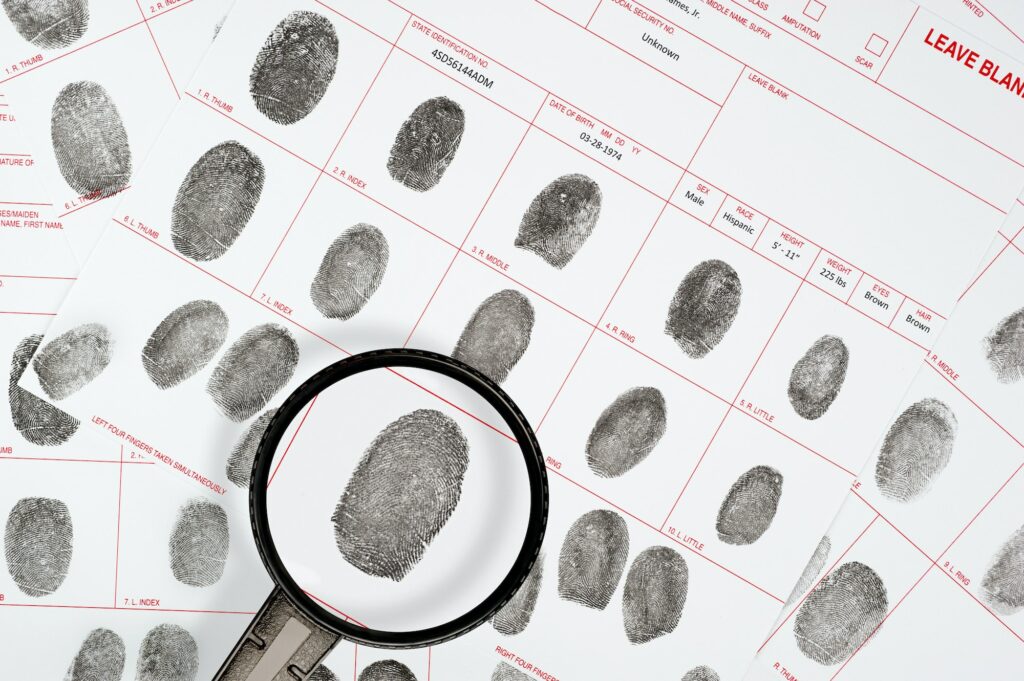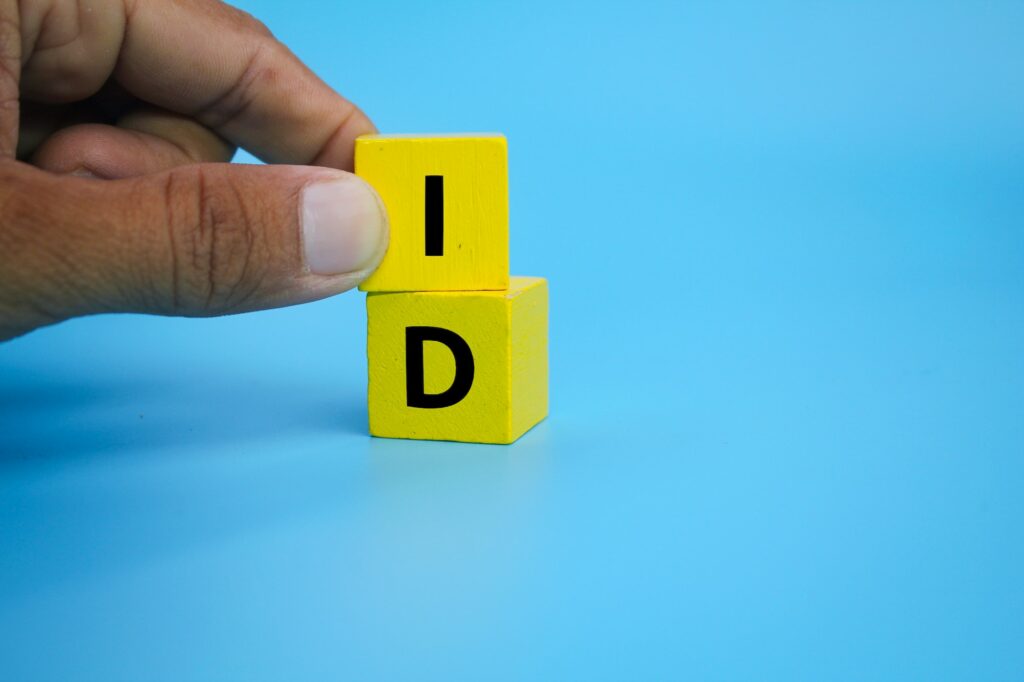ID verification, also known as identity verification, is the process of confirming the authenticity and validity of an individual’s identity information. It involves verifying the accuracy of personal details provided by an individual, such as their name, date of birth, address, and other relevant information. ID verification is commonly used in various sectors, including financial institutions, government agencies, online platforms, and businesses that require a high level of trust and security.

Table of Contents
ToggleImportance of ID verification
ID verification plays a crucial role in preventing identity theft, fraud, and unauthorized access to sensitive information or resources. By verifying the identity of individuals, organizations can ensure that only legitimate users gain access to their services, products, or facilities. This helps protect individuals’ privacy and security while maintaining the integrity of the systems and processes in place.
Methods of ID verification
Several methods and techniques are employed for ID verification, depending on the context and requirements of the situation. Here are some common methods used for ID verification:
1. Document verification
Document verification involves examining and authenticating official identity documents, such as passports, driver’s licenses, national identification cards, and other government-issued documents. The verification process may include checking security features, scanning for tampering or forgery, and cross-referencing the information provided with external databases or authorities.
2. Biometric verification
Biometric verification utilizes unique biological or behavioral characteristics of an individual to establish their identity. Common biometric identifiers include fingerprints, iris patterns, facial recognition, voice recognition, and even DNA. Biometric verification provides a high level of accuracy and security as these traits are difficult to forge or replicate.
3. Knowledge-based verification
Knowledge-based verification involves asking questions or requesting specific information that only the legitimate user would know. This method often relies on personal information that is not publicly available, such as previous addresses, account details, or secret codes. The purpose is to confirm the identity of the individual based on their ability to provide accurate answers.
4. Two-Factor authentication (2FA)
Two-factor authentication adds an extra layer of security by combining two different verification methods. Typically, this involves combining something the user knows (e.g., a password or PIN) with something the user possesses (e.g., a mobile device for receiving a verification code) or something biometric (e.g., a fingerprint or face scan). 2FA enhances the security of ID verification by requiring multiple factors to confirm an individual’s identity.

Applications of ID verification
ID verification is utilized in various industries and scenarios where verifying the identity of individuals is essential. Here are a few common applications:
Financial services
Banks, credit card companies, and other financial institutions employ ID verification to comply with regulatory requirements, prevent fraudulent transactions, and ensure the security of customers’ accounts. It helps protect against identity theft, money laundering, and other financial crimes.
Online platforms and E-commerce
Online platforms and e-commerce websites implement ID verification to establish trust between buyers and sellers, prevent fake accounts, and create a safe environment for online transactions. By verifying the identities of users, these platforms can reduce the risk of fraud and maintain the integrity of their services.
Government services
Government agencies use ID verification to validate the identity of individuals accessing government services, such as applying for passports, driver’s licenses, social security benefits, or voting. This helps ensure that the services are provided to legitimate citizens and prevents identity-related fraud.
Employment and background checks
Employers and recruitment agencies perform ID verification to confirm the identity and eligibility of job applicants, as well as to conduct background checks. This helps ensure the hiring of qualified individuals, protects against identity fraud in the workplace, and maintains a safe working environment.
Privacy and security considerations
While ID verification is crucial for maintaining security and trust, it also raises concerns about privacy and the responsible handling of personal information. Organizations that collect and process individuals’ data for verification purposes must adhere to relevant data protection laws and regulations. They should implement appropriate security measures to safeguard the information and ensure it is used only for legitimate purposes.
Conclusion
ID verification is a vital process used to confirm the authenticity and validity of an individual’s identity information. It helps prevent identity theft, fraud, and unauthorized access to sensitive resources. With various methods like document verification, biometric verification, knowledge-based verification, and two-factor authentication, ID verification is widely used in financial services, online platforms, government agencies, and employment sectors. By implementing effective ID verification procedures, organizations can enhance security, protect individuals’ privacy, and maintain trust in their systems and services.
Frequently asked questions (FAQs)
Here are some frequently asked questions about ID verification:
Q1: Why is ID verification necessary? A1: ID verification is necessary to establish the authenticity and validity of an individual’s identity information. It helps prevent identity theft, fraud, and unauthorized access to sensitive resources, ensuring the security and integrity of systems and processes.
Q2: How does ID verification work? A2: ID verification can be conducted through various methods such as document verification, biometric verification, knowledge-based verification, or two-factor authentication. These methods involve verifying personal information, examining official documents, checking biometric traits, or confirming unique knowledge possessed by the individual.
Q3: Is ID verification secure? A3: Yes, ID verification methods are designed to ensure security. However, the level of security may vary depending on the specific method used and the measures implemented by the organization performing the verification. It is important for organizations to adhere to privacy regulations and implement appropriate security measures to protect the collected data.
Q4: Can ID verification be done online? A4: Yes, ID verification can be done online through digital platforms. Online ID verification may involve uploading scanned copies of official documents, submitting biometric data through secure channels, or answering knowledge-based questions. Organizations use encryption and secure protocols to protect the information shared during online verification processes.
Q5: What happens if ID verification fails? A5: If ID verification fails, it means that the provided information or documentation does not meet the required standards or does not match the records available. In such cases, individuals may be required to provide additional or alternative documents, undergo further verification steps, or seek assistance from the relevant organization’s support team to resolve the issue.
Q6: Is ID verification a one-time process? A6: ID verification can be a one-time process or may need to be periodically renewed, depending on the organization’s policies and the nature of the service being accessed. Some organizations require regular updates or re-verification to ensure that the identity information remains up to date and accurate.
Q7: How is personal data protected during ID verification? A7: Organizations conducting ID verification are responsible for safeguarding personal data. They should adhere to data protection laws and regulations, implement robust security measures, and ensure that the information collected is used only for the intended purpose of verification. Encryption, secure storage, access controls, and data anonymization are some of the measures employed to protect personal data.
Q8: Can ID verification be fooled or bypassed? A8: While ID verification methods aim to minimize the risk of fraud, determined individuals may attempt to bypass or deceive the verification process. However, organizations continuously update and enhance their verification techniques to detect and prevent fraudulent activities. The use of multiple verification methods, advanced technologies, and cross-referencing with external databases helps reduce the likelihood of successful deception.
Q9: What industries or sectors commonly use ID verification? A9: ID verification is commonly used in financial services, government agencies, online platforms and e-commerce, employment and recruitment, healthcare, telecommunications, and other sectors where verifying the identity of individuals is essential for security, compliance, and trust.
Q10: Can ID verification be performed internationally? A10: Yes, ID verification can be performed internationally, although specific requirements and methods may vary across countries. International organizations and regulatory bodies work towards establishing standards and frameworks for cross-border ID verification to facilitate secure transactions and interactions on a global scale.

